Formal Letter Samples
-

Formal Letter in English
download now -

Formal Letter to Principal
download now -

Formal Letter Example for Students
download now -

Formal Letter Format for School
download now -

Formal Letter Format Template
download now -

Formal Letter of Interest Template
download now -

Formal Letter Example Template
download now -

Informal Letter Sample Template
download now -

Formal Resignation Letter Template
download now -

Formal Demand Letter Template
download now -
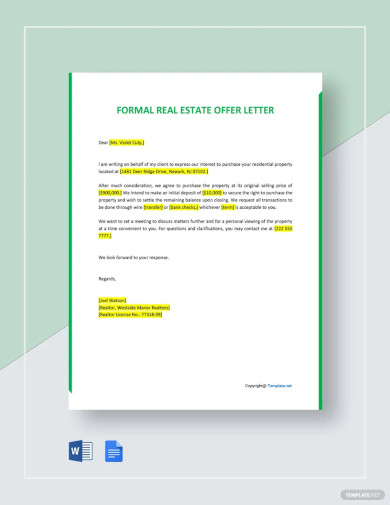
Formal Offer Letter For Real Estate Template
download now -

Formal Business Letter Template
download now -

Formal Leave Letter Template
download now -

Formal Application Letter Format Template
download now -

Formal Interview Letter Template
download now -

Formal Apology Letter Template
download now -

Formal Complaint Letter Template
download now -
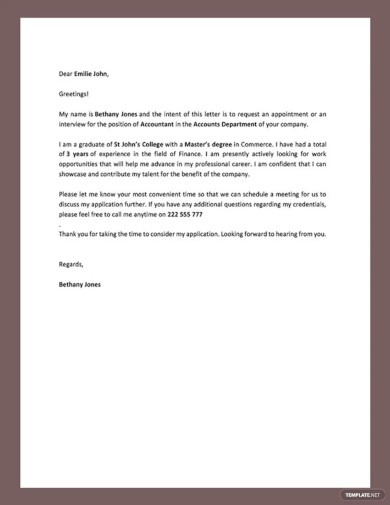
Formal Request Letter Template
download now -

Formal Congratulation Letter Template
download now -
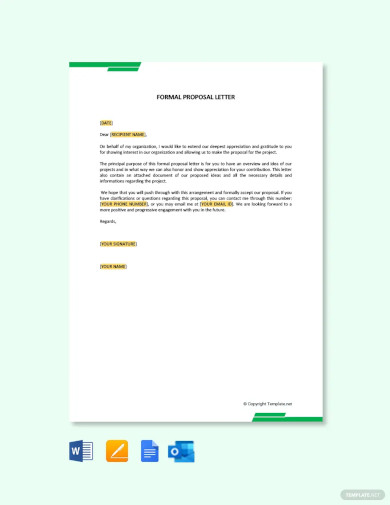
Formal Proposal Letter Template
download now -

Formal Reference Letter Template
download now -

Formal Invitation Letter Template
download now -

Formal Thank You Letter Template
download now -

Formal Job Offer Letter Template
download now -

Formal Principal Cover Letter
download now -

Sample English Demand Letter
download now -

Three-Day Notice for Nonpayment of Rent Letter
download now -

Writing Formal Letter
download now -
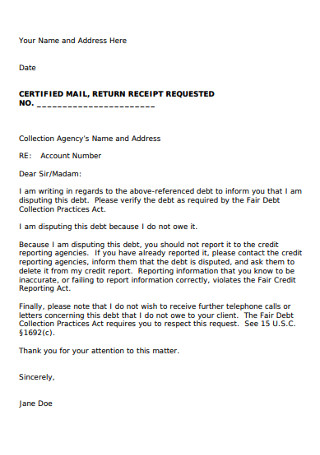
Business Agency Collection Letter
download now -

Authorisation Letter for Passport Collection
download now -

Sample Job Application Letter
download now -

Professional Letter Format
download now -

Vacation/Leave of Absence Approval Letter
download now -

Sample Letter from Government
download now -

Landlord Reference Letter Sample
download now -

Vacation Application Letter of Request
download now -

Monthly Tenant Rent Increase Letter
download now -

Formal AdmissionLetter
download now -

Academic Teacher Permission Letter
download now -
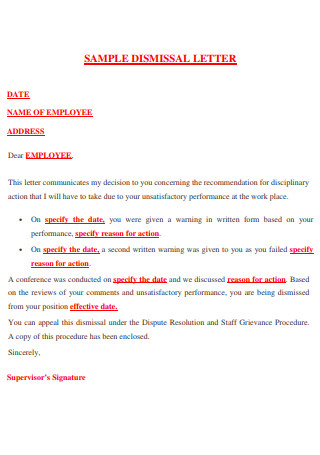
Sample Bank Dismissal Termination Letter
[/ns_alinkdownload now
-

Sample Formal Subject Letter
download now -

Board Director Meeting Letter
download now -

Company Board Director Resignation Letter
download now -
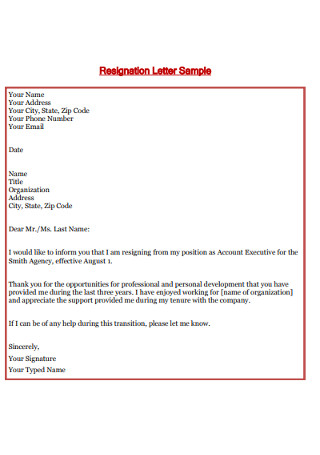
Sample Student Absent Letter
download now -
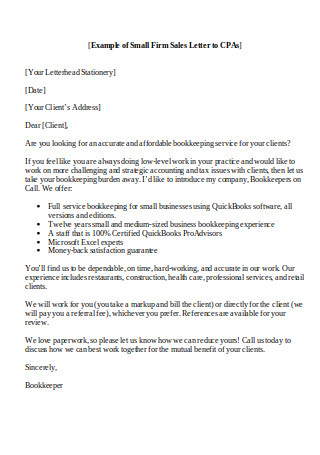
Small Firm Class Sales Letter
download now -

Letters of Recommendation for Law Student
download now -

Sample Formal Address Letter
download now -

Formal Clinical Nurse Leader
download now -

Formal Nurse Letter
download now -

Letter for Residential Payment Lease
download now -

Sample Editor Letter
download now -

Sample Retirement Resignation Letter
download now -

Formal Retirement Incentive Resignation Letter
download now -

Formal Tenants Reference Letter
download now -

Retirement Personal Resignation Letter
download now -

Sample Retirement Resignation Letters
download now -

Standard Retirement Resignation Letter
download now -

College Employee Resignation Letter
download now -

Formal Early Lease Vehicle Termination Letter
download now -

Sample Sales Letter Format
download now -

Advertising Sales Letter Sample
download now -
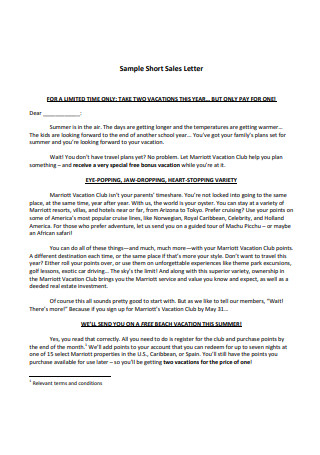
Sample Short Sales Letter
download now -

School Board Resignation Letter
download now -

State Board Official Resignation Letter
download now -

Simple Tenant Reference Letter
download now -

Landlord Reference Letter Format
download now -

Letter of Recommendation for Position
download now -

Personal Recommendation Letter
download now -

Formal and Informal Language
download now -

Sample Personal Business Letter
download now -

Employment Cover Letter
download now -

Formal Complaint Letter Template
download now -

Marketing Sales Manager Cover Letter
download now -

Marketing Coordinator Cover Letter
download now -

Thank You for Followup Sales Letters
download now -

Sample HR Employee Cover Letter
download now
FREE Formal Letter s to Download
Formal Letter Format
Formal Letter Samples
What Is a Formal Letter?
Formal Letters vs Informal Letters
How to Write a Formal Letter
Dos and Don’ts of Formal Letter Writing
Why is writing letters important?
What are formal letter parts?
What are function of formal letter?
What are the four types of formal letters?
How do you write a formal letter and sample?
What are the five features of a formal letter?
How can I type a formal letter?
What is a formal letter Grade 4?
Which letter has one address?
What is a semi-formal letter?
How to start a formal letter introduction?
How to start a formal letter first paragraph?
Why is a business letter important?

Formal Letter Format
Sender’s Information
Start with your name, address, phone number, and email address at the top left of the page.
Date
Place the date directly below your contact information.
Recipient’s Information
Include the name, title, organization, and address of the person you are writing to.
Salutation
Open with “Dear [Name/Title],”
Body
Introduction: Briefly introduce the purpose of your letter.
Main Content: Provide the necessary details and supporting information.
Conclusion: Summarize your points and state any required actions or expectations.
Closing
Use a formal closing, such as “Sincerely,” followed by your signature and printed name.
What Is a Formal Letter?
A formal letter is a form of written communication used in formal correspondence, used especially in the business and academic setting, both between individuals and companies. Basic skills in formal letter writing are advantageous, especially if you run a business and you need to build a solid relationship with your clients and customers.
The sender, or the writer of the formal letter, should stick to a tone that is informative or persuasive depeding on the type of formal letter being sent. The sender also needs to have a professional purpose and reason for writing one. It also follows a strict format that is written with clear objectives.
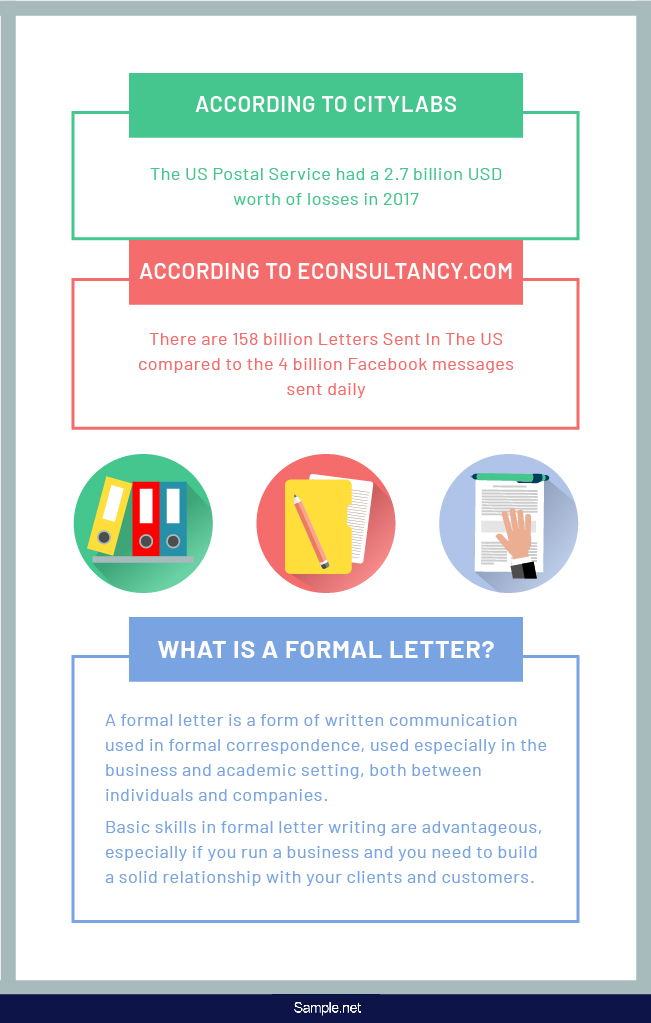
Formal Letters vs Informal Letters
There are two types of letters: formal letters and informal letters. These types of letters are both used for correspondence. However, each type of letter serves a specific purpose.
Formal letters are used for official matters. You send a formal letter to an employer when recommending someone for a job position, to your business partner when proposing business plans, to your customers when addressing their complaints and inquiries, and many more. Informal letters are sent for friendly or casual matters. You send an informal letter in instances such as when informing your relatives about your upcoming wedding and when asking your best friend how they are after living the first time overseas.
The composition of formal letters is more structured to meet the official objective of the letter. The writer should follow a strict and precise tone even if the recipient is a colleague or someone they know personally simply because the purpose of sending the letter is purely business. On the other hand, informal letters may be written with no rules at all. You can use conversational terms, and you can use whatever format you want. With formal letters, you need to write only matters that are relevant to your main message, but with informal ones, you can introduce various topics.
How to Write a Formal Letter

Know how to write a basic but effective formal letter with these easy-to-follow steps below.
Step 1: Start with the Sender’s Address Details
To start off a formal letter, the details of the sender are first written. It may include the house number, street address, city, state, and zip code. For this section, do not bother writing the name and the title of the sender. The name and title will be written later on after the complimentary close. You should also take a look at our Letters of Agreement
Step 2: Indicate the Date
You can either write the date when you wrote the letter or the date when you finished writing the letter. Write in the American date format that starts with the month, followed by the day and then the year. You should also take a look at our Security Deposit Return Letter
Step 3: Type the Inside Address
For this section, write the address of the recipient. Apart from the obvious details, you must know who you are addressing the letter. Do not forget to include the receiver’s title. Personal titles such as Mr., Mrs., Ms., or Miss are important, and so are honorary academic titles such as Dr., Engr., and Atty. If you have no idea of the receiver’s full title and name, do your research so you would know how to address the receiver in the salutations. You should also take a look at our
Step 4: Introduce the Body with the Salutation
To introduce the body of the letter, always start with a salutation. The most common salutation is Dear followed by a colon since it is a formal business letter, then the family name or the name of the receiver along with the appropriate title. For example, Dear Dr. Pratts. That is why it is important that right from the start, you already know how you will address the receiver of your letter so you would know how to address the receiver properly. But if you are unsure of the sender’s gender, you can always write their full name. For example, Dear Alex Garcia.
Step 5: Write the Body of the Letter
Upon writing the body of a formal letter, always keep in mind that brevity and conciseness are a must that is why it is a must that you write based on a logical and comprehensive structure. Three is the ideal number of paragraphs to write.
The first or the introductory paragraph should start with a friendly but courteous introduction and a brief Research statement of the main message of your letter.
The second or supporting paragraph should further discuss the details of the letter’s message. You may also supply additional background information in the second paragraph.
For the third or concluding paragraph, mention the gist of the letter’s purpose and then followed by the call to action. Be sure not to introduce any new idea in the concluding paragraph.
Step 6: End the Letter with a Complimentary Close
Always end a formal letter with a proper complimentary close. In doing so, you end on a good and respectful procedure note. Among the common closing used in formal letters are Sincerely yours, Best regards, and Respectfully yours. These are other options you can find if you don’t want to use the ones mentioned above. You may have to choose one based on how well you are familiar with the receiver of the formal letter.
Step 7: Write the Name and Signature:
If you are the sender of the letter, this the part of the letter where you write down your full name in print and signature. Always sign the letter as soon as you have printed it out. For some people, they write their positions below their name in print, especially if the receiver is just within the company. Like how you are careful with the receiver’s correct title, make sure you also properly address yourself so that when the receiver is ready to respond, they can also return the same favor and address you accordingly. You should also take a look at our Rent Increase Letter
Step 8: Indicate Any Enclosures:
Not all formal letters have enclosures, but if yours have one, be sure to indicate this at the bottom part of your formal letter. Upon doing so, you may list the title or name of every enclosure you have along with your formal letter. You should also take a look at our Grievance Letter
Dos and Don’ts of Formal Letter Writing
If your work requires you to make formal correspondence daily, then you must find ways to polish your formal letter writing skills if you still haven’t mastered it yet. To help you get to a certain level of mastery, you may get started and take notes from some of our dos and don’t of formal letter writing.
Dos
1. Do always keep your recipients in mind when writing.
Always remember that you are writing for your recipients and not for yourself. Even if you are writing a letter that contains your message, it is still essential that you compose the letter according to who your readers are. For instance, you are sending a cover letter for an IT-related job position. Then you should not include terms and jargon of other fields such as engineering or architecture, or else your interviewer will not be able to understand any of it. You should also take a look at our HR Letter
2. Do compose a letter that is made up of brief and concise paragraphs.
If you want your message to be understood right away by your recipient, then observe brevity and conciseness when constructing the sentences and paragraphs of your formal letter. A characteristic of a sample brief and concise letter is that it should get to your main message right away. It presents concrete details and leaves no room for anything vague and abstract. A formal letter should not contain any flowery words that weigh no value in the delivery of your message.
3. Do know the best structure for the type of letter you’re writing.
As discussed above, there are various types of formal letters for multiple purposes. You must know what kind of letter you are writing to determine the appropriate and fitting structure to use quickly. For instance, you are writing a letter of application, the construction of your letter begins with the introduction of your name, followed by the job position you are applying for, your reasons for applying, your qualifications, and a closing paragraph that states your interview availability. Knowing the right structure enables you to write a letter with a smooth and precise flow of ideas.
4. Do use a professional writing tone for your formal letter.
Since you are writing a formal letter, it is already expected of you to write one that has a professional tone. In its absence, you are merely writing an informal or friendly one. Even if you are writing to a colleague that you can casually talk to, it is proper etiquette that you send them a formal letter that written in an appropriate, professional tone if your intention to write one is purely business. You need to write a formal letter if you don’t know who you’re writing to?better be safe than put yourself in a predicament. You should also take a look at our Congratulation Letter
5. Do consider the use of a letterhead.
If you want to start from scratch instead of using a template but you want to be a bit creative brief and professional at the same time, consider the use of a letterhead. With the use of a ready-made letterhead, you can easily incorporate your business logo and address instead of writing down the sender’s address details. A letterhead can also be used as part of your branding efforts as it does not only keep your branding image consistent but it also makes your business look more legitimate and authoritative. You should also take a look at our Child Authorization Letter
Don’ts
1. Don’t forget to check the details of your recipient’s information.
Don’t make the common mistake of addressing someone as ‘Miss’ when it should have been ‘Mrs.’, or worse, ‘Mr.’ It is also unacceptable if you miss out on addressing someone with their job title?they didn’t strive hard on their careers only for a clueless letter sender to send them a letter that does not address them properly. Before printing your letters and you still see the need to double-check, then, by all means, double-check the contents of your letter and save yourself from making irreversible mistakes. You should also take a look at our Letter of Interest
2. Don’t miss out on incorporating a call to action in your formal letter.
No matter how well-written your first two paragraphs are, it will all go in vain if you do not incorporate a call to action. For instance, you sent an application letter, and you forgot, including a call to action. It so happens that the hiring managers were interested in you after reading your application letter. Now, how can they confidently contact you if you haven’t included a call to action that expresses your interest and your willingness to be called any time for an interview? You should also take a look at our Personal Reference Letter
3. Don’t leave out proofreading in the process of your letter writing.
Don’t get too confident enough that the first draft of your letter is already good enough. Like any writeups, a letter’s first draft still requires quite a lot of polishing even if you have read it over again and noticed no errors. Ideally, you take a break first before printing your letter. It is in this way that you can go back to it and proofread it with a fresher perspective. You will surely find it surprising that your work still needs a lot of editing. You can also read it aloud to yourself to determine whether it already sounds professional and appropriate enough for sending. You should also take a look at our Warning Letter
4. Don’t prolong your formal letter with unnecessary sentences.
When writing a formal letter, you should always mean business. And when you mean business, you need to construct sentences that directly express what you want to convey. Don’t waste both you and your recipient’s time with a letter that doesn’t cut to the chase. If you’re going to promote something, provide a brief background statement of your company and immediately promote your products or services. It is also ideal to have a structure in mind so you would know what content to write for every paragraph and limit each paragraph with 2-3 sentences.
5. Don’t neglect proper formal letter formatting.
A formal letter should be appropriately presented to its receivers; that is why ensure that you get yourself familiar with proper formal letter formats. There are three formal letter formats you can use, namely the full block style, semi-full block style, and modified block style. Know what format that is appropriate for the type of letter you’re writing. Failure to do so will only make your letter go straight to the trash. You should also take a look at our Confirmation Letters
Regardless of your current job position, formal letter writing skill is a fundamental skill that you should have already mastered by now. If not, worry not because it’s never too late to learn and master the basics. You may download the formal letter templates and examples provided here in this article to further guide you throughout your mastery or even if you want to brush up your skills. You should also take a look at our Contract Letter
Why is writing letters important?
Writing letters remains a fundamental skill for personal and professional communication, crucial for clear, effective exchanges like those needed in Job Letter of Recommendation.
- Record Keeping: Provides a written record of the communication.
- Formality and Etiquette: Adheres to formal rules of engagement.
- Clarity of Message: Allows precise expression of ideas.
- Professionalism: Demonstrates professionalism in business contexts.
- Personal Touch: Offers a personal element in communication, even at a distance.
What are formal letter parts?
A formal letter is a structured form of communication, used in professional settings, similar to Board Resolution Letter.
- Sender’s Contact Information: Name, address, and date at the top.
- Recipient’s Address: Directly below the sender’s address.
- Salutation: Formal greeting, e.g., ‘Dear Mr./Ms.’
- Body: Main content organized in structured paragraphs.
- Closing: Complimentary close followed by your signature and name.
What are function of formal letter?
Formal letters serve specific functions in various contexts, from requests like Permission Request Letter to official announcements.
- Information Dissemination: Conveys important information or decisions.
- Request Fulfillment: Used to make or respond to requests.
- Complaint Resolution: Addresses grievances in a structured manner.
- Relationship Building: Helps maintain professional relationships.
- Documentation: Acts as a legal document or proof of correspondence.
What are the four types of formal letters?
Formal letters can vary based on purpose, such as Apology Letter, each serving a unique function.
- Inquiry Letters: Seek information or clarify details.
- Complaint Letters: Express dissatisfaction or concerns.
- Adjustment Letters: Respond to complaints or requests for redress.
- Cover Letters: Accompany resumes, introducing the applicant and their qualifications.
How do you write a formal letter and sample?
Writing a formal letter involves specific steps, essential for effective communication, as seen in Letters of Employment.
- Introduction: Briefly state the purpose of the letter.
- Body: Elaborate on the reason for writing.
- Conclusion: Summarize the letter’s purpose and next steps.
- Signature: End with a formal closing and your signature.
- Sample: Provide an example to illustrate the structure.
What are the five features of a formal letter?
A formal letter has distinctive features, ensuring clarity and professionalism akin to Explanatory Letter.
- Consistency: Uniform format and style.
- Objectivity: Facts are presented without personal bias.
- Precision: Direct and to the point.
- Formality: Respectful tone and polite expressions.
- Identifiability: Clear identification of the sender and receiver. You should also take a look at our Event Invitation Letter.
How can I type a formal letter?
To type a formal letter, use a word processor, set proper margins, choose a professional font, and follow a formal layout, akin to a Simple Resignation Letter.
What is a formal letter Grade 4?
For Grade 4, a formal letter is a basic written communication, teaching students to state a purpose clearly and use a polite tone, similar to a Petition Letter.
Which letter has one address?
A formal letter typically features one address, prominently displayed at the top, right below the sender’s contact information, similar to Official Resignation Letter.
What is a semi-formal letter?
A semi-formal letter blends formal and informal tones, suitable for acquaintances or colleagues, not as casual as Immediate Letters of Resignation but less stiff than official correspondence.
How to start a formal letter introduction?
Start a formal letter introduction by addressing the recipient properly, stating your name, and briefly mentioning the purpose, similar to an Appeal Letter introduction.
How to start a formal letter first paragraph?
Begin the first paragraph of a formal letter by clearly stating the main purpose of the letter, ensuring clarity and relevance, akin to a Job Reference Letter.
Why is a business letter important?
A business letter is crucial for formal communication, presenting professionalism, facilitating clear information exchange, and often supporting transactions like those in Sponsorship Letter.
Formal letters are indispensable in professional settings, serving as a foundation for communication and documentation, similar to Collaboration Letter that foster professional partnerships. This article has covered essential aspects of crafting formal letters, from structure to etiquette, providing you with the knowledge to create impactful and professional correspondence. By utilizing the samples, forms, and guidelines provided, you can effectively communicate in any professional scenario, ensuring your messages are both respected and understood.

